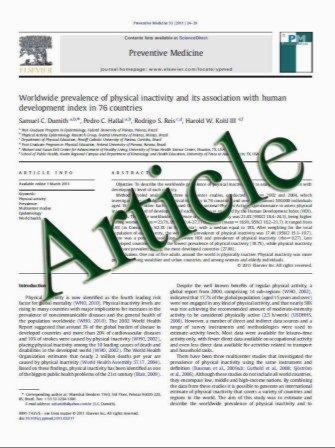Effect of cigarette smoking on plasma uric acid concentrations
- نوع فایل : کتاب
- زبان : انگلیسی
- مؤلف : Dhouha Haj Mouhamed Asma Ezzaher Fadoua Neffati Wahiba Douki Lotfi Gaha Mohamed Fadhel Najjar
- چاپ و سال / کشور: 2010
Description
Objectives The purpose of this study was to examine the effect of cigarette smoking on plasma uric acid concentration and to determine the correlation between this parameter and the biological tobacco markers, plasma thiocyanate and urinary cotinine. Methods The initial study was conducted on 300 subjects; 138 of them were nonsmokers (62 men and 76 women) aged 14–72 years and 162 were current smokers (145 men and 17 women) aged 16–85 years. Uric acid, creatinine, and urinary cotinine were determined by the enzymatic colorimetric method and plasma thiocyanate by selective electrode. Results Plasma uric acid concentration was significantly lower in smokers than in nonsmokers. A statistically significant negative correlation was noted between the smoking status parameters, including both the number of cigarettes smoked/day (F3–161 = 12.063; r = -0.9968; p = 0.0001) and the duration of smoking (F3–161 = 1.305; r = -0.9406; p = 0.0274), and the plasma uric acid. Among smokers, we noted a negative correlation between uric acid and both plasma thiocyanates (r = -0.437; p\0.05) and urinary cotinine (r = -0.580; p\0.05). Conclusion After excluding the other factors affecting the uric acid levels, the significant low plasma uric acid in smokers was attributed to a reduction of the endogenous production as a result of the chronic exposure to cigarette smoke that is a significant source of oxidative stress. Therefore, it is recommended to stop or reduce smoking and to introduce plasma uric acid estimation as a routine test, since it is cheap and simple to reflect the antioxidant level.
Environ Health Prev Med DOI 10.1007/s12199-010-0198-2 Received: 23 July 2010 / Accepted: 11 November 2010


